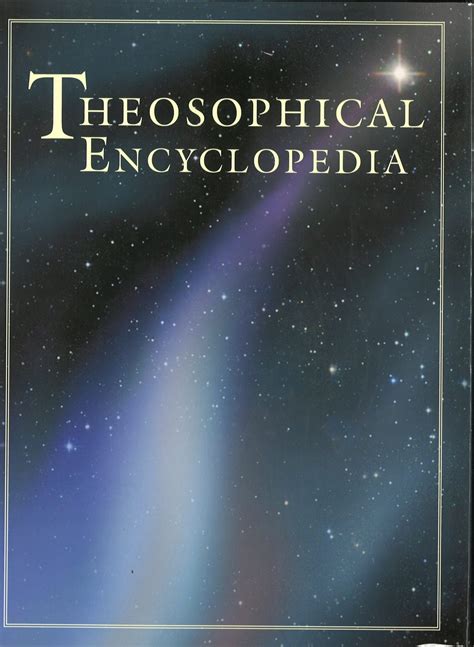… rites). They are said to have been written in 900-700 BCE. Helena P. BLAVATSKY considers the Brāhmaṇas as preeminently occult works, hence used purposely as blinds. They were allowed to survive for public use and property only because they …
… lists the six prajñā- pāramitās ; these are commented on extensively by Charles W. LEADBEATER in Talks on the Path of Occultism , Vol. 2 (1926; 4th ed. 1954), pp. 183-4 and 262-273. Furthermore, HPB states in The Secret Doctrine that prajñā , …
… which the Voice of the Silence came. Many commentaries on this mystical work has been written, such as Talks on the Path of Occultism, Vol. III by Annie BESANT and Charles W. LEADBEATER. In the latter work, it was stated that the work was written …
… make the machine work except Keely. Helena P. Blavatsky explained in The Secret Doctrine that Keely’s motor involved an occult principle which is as yet unknown to science, and its operation necessitated the presence of a person who had unusual …
… rites). They are said to have been written in 900-700 BCE. Helena P. BLAVATSKY considers the Brāhmaṇas as preeminently occult works, hence used purposely as blinds. They were allowed to survive for public use and property only because they …
… father’s brothers in Ohio, where he worked two years on a small farm for a share. These uncles encouraged his interest in occult phenomena, hypnotism, and mesmerism, and Olcott discovered he had some mesmeric ability. Returning to New York to … in individual human consciousness of metaphysical and transcendental truth” (op. cit., p. 26). He sought to show that occultism and spirituality were truly scientific, while materialism was not. “Theosophy derives its divine knowledge from …
… that he belonged to the Martinist-related Masonic Rite of the Philalethes, “whose members made a special study of the Occult Sciences” ( CW XII: 82, 84 fn). HPB had great respect for Saint-Germain, defending him from critical comments ( CW … history and enter that of esoteric legend. Biographical information may be found in CW III:523-8; Encyclopedia of Occultism and Parapsychology 2:1120–1; and Jean Overton Fuller’s Comte de Saint-Germain . J.A. © Copyright by the …
… because she held to the view that a superficial treatment of the subject is undesirable and even harmful. In her Practical Occultism (TPH, Adyar, 1959 ed., pp. 8-9), she writes of, “. . . the enormous, almost limitless, responsibility assumed by … mental or physical — on their pupils, they take upon themselves all the sins of that pupil, in connection with the Occult Sciences, whether of omission or commission, until the moment when initiation makes the pupil a Master and …
… The word “magic” derived from the Greek mageia and the Latin magia. The earliest use of the word in found in the occult practice and philosophy of the Persian Magi and since these magi had, possibly undeservedly, a reputation for … is not a violation of the laws of Nature, except for ignorant people. Magic is but a science, a profound knowledge of the Occult forces in Nature, and of the laws governing the visible or the invisible world” (CW I:137). Writing in 1904, Franz …
… literature regards analogy not simply as an argument but as a law. “Analogy is the surest guide to the comprehension of the Occult teachings,” wrote Helena P. BLAVATSKY ( SD I:173). “From Gods to men , from Worlds to atoms, from a star to a … The law of Analogy is the first key to the world-problem, and these links have to be studied co-ordinately in their occult relations to each other” ( SD I:604). This law underlies the ancient hermetic axiom, “As above, so below.” The …
 This Theosophical Encyclopedia contains all the articles of the printed Theosophical Encyclopedia published by the Theosophical Publishing House, Manila. In addition, new articles that are not in the printed version are continually being added. Many of the articles are also being updated.
This Theosophical Encyclopedia contains all the articles of the printed Theosophical Encyclopedia published by the Theosophical Publishing House, Manila. In addition, new articles that are not in the printed version are continually being added. Many of the articles are also being updated.